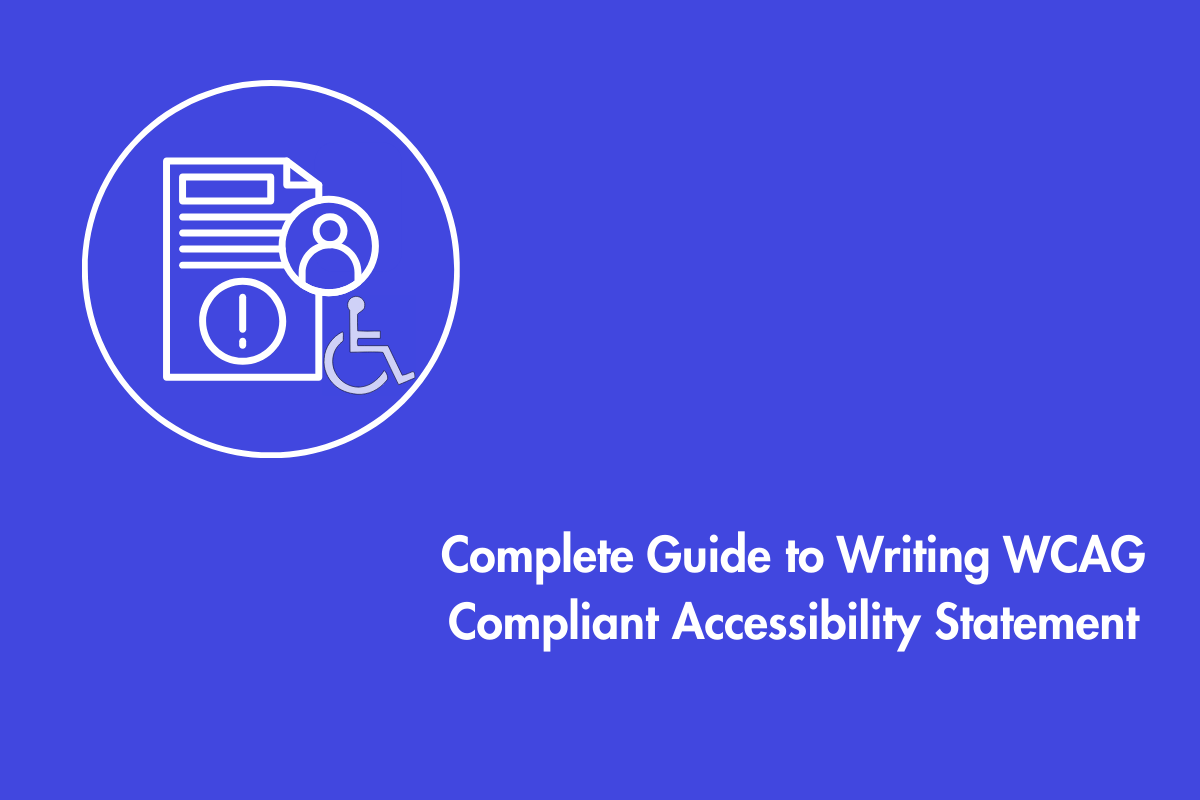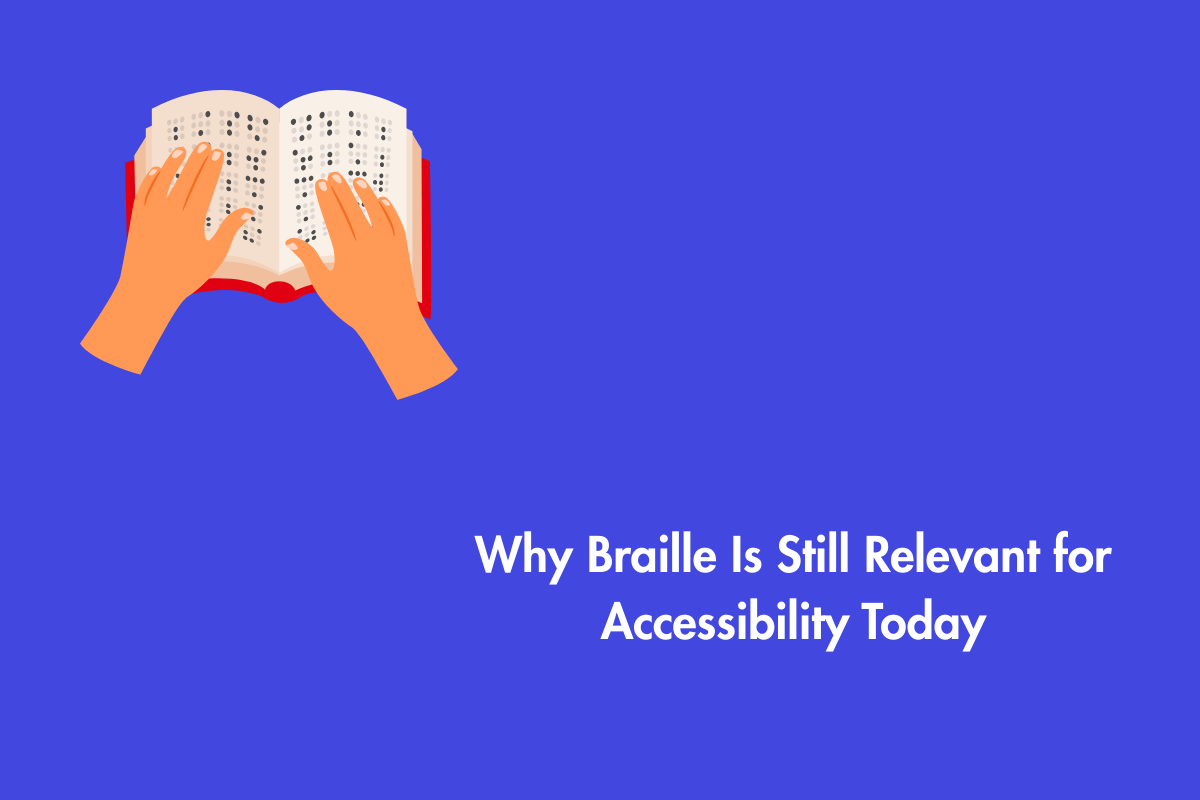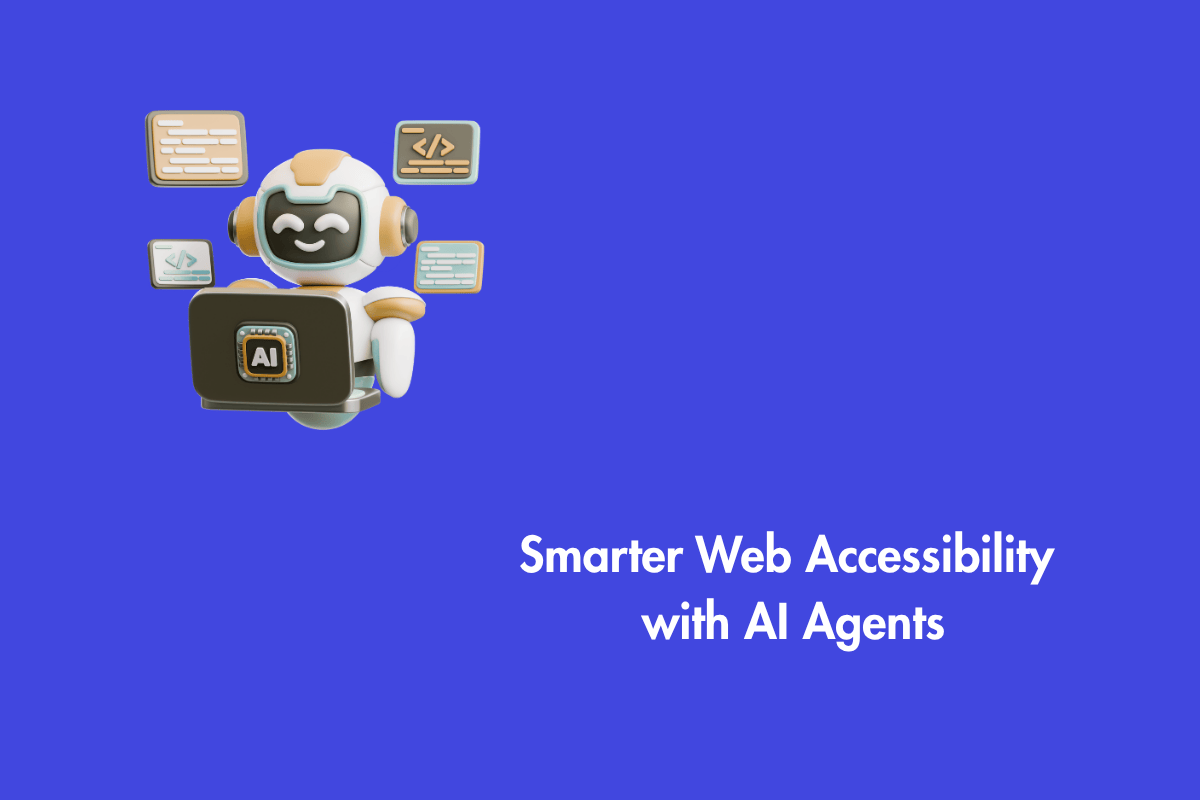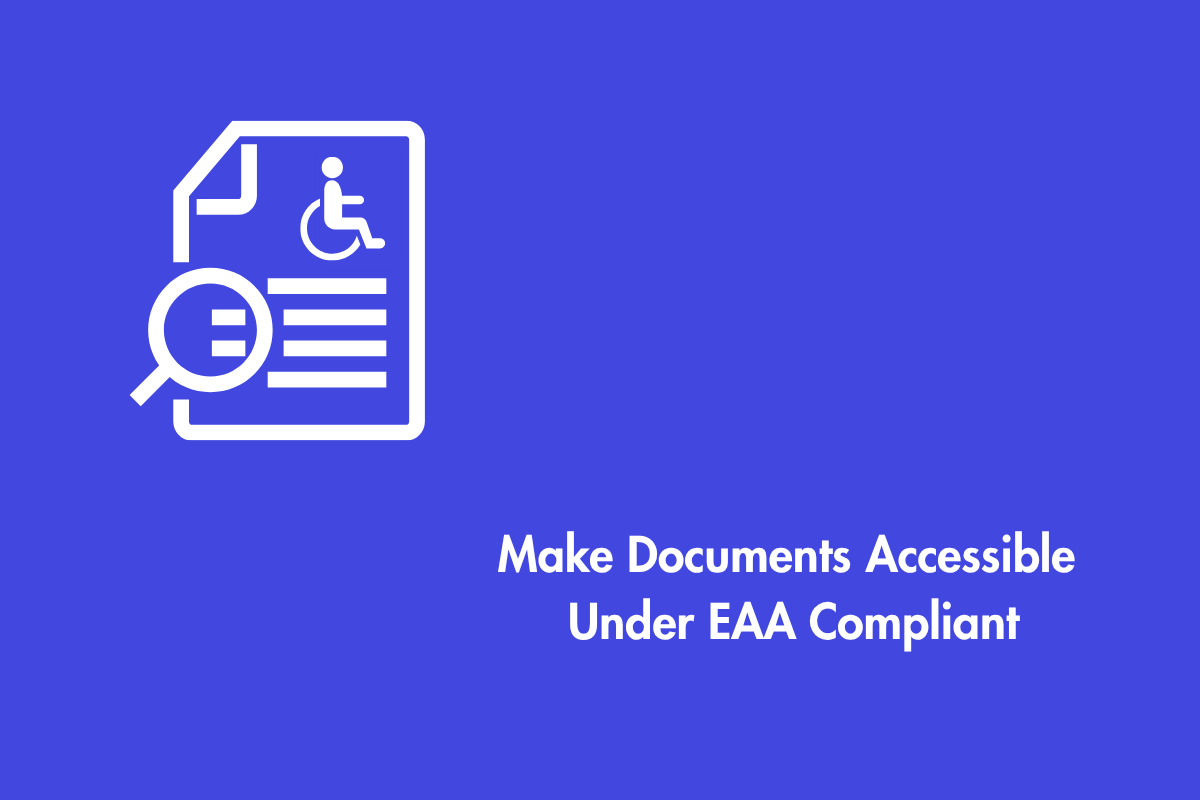An accessibility statement is often treated as a compliance checkbox or a static page to fulfill a legal requirement. Unfortunately, that is a critical misjudgement of its value. The accessibility statement is a dynamic strategic asset. It is your primary channel for communicating your organization’s commitment to digital inclusion that mitigates legal risk and builds authentic trust. As a result, it helps greatly in managing user expectations. Many organizations fail to recognize its importance by creating a generic statement that is of no use to anyone. In this blog, we will explore all aspects of the statement and we have also included a sample accessibility statement for clear understanding.
Table of Contents
But, what is an Accessibility statement?
An accessibility statement lets people know how your website or digital product is designed to work for users with disabilities. It also shares which accessibility standards you follow, such as the Web Content Accessibility Guidelines (WCAG).
By meeting these standards, you help make sure that people using tools like screen readers, as well as anyone with other access needs, can use your site comfortably.
Where should you place the statement?
You’ll usually find accessibility statements linked in a site’s footer, right next to privacy policy and terms of service.
Your accessibility statement should be easy for anyone to find. Linking to it from multiple places, like the footer, help menu, sitemap, or About page, makes it much more visible.
It is recommended to use the same link name wherever you refer to it. This consistency helps users quickly recognize what they are looking for, whether they are on your website or using your mobile app.
For example, use the same link label on every web page and use that same label in the mobile app version as well.
Defining the Purpose
Understanding the intent and establishing core objectives is an essential part of a good accessibility statement:.
- Transparency: The goal is not to claim perfect compliance but to be transparent about your current accessibility status. Being honest about limitations builds trust and demonstrates your commitment to continuous improvement.
- Roadmap: Creating a roadmap that is user-centric will empower all users to use your website effectively. Additionally, it gives users a clear and most importantly, a respectful path to report any issues they face. A good statement written by the best lawyers will fail its core audience if it is too complex for the users to understand.
- Document(up-to-date): Your accessibility statement must be dynamic, constantly updated about new features and reflect remediation progress. An outdated document is not helpful to either you or your users.
Understanding the Core Components
An accessibility statement outlines dedication to accessibility, how compliance is measured, the limitations acknowledged, and the ways users can provide feedback or seek assistance.
Here are the core components of a professional accessibility statement:
1. Declaring commitment
Purpose: A clear and unambiguous statement of your dedication.
Execution: Avoid vague or overtly corporate language as it will just confuse your users. Next, be clear about your commitment to accessibility and who it covers, such as people with auditory, cognitive, visual, or physical disabilities. Lastly, state the relevant standards that you are following by its name such as the Web Content Accessibility Guidelines (WCAG).
Use readable fonts, high-contrast colors, and emphasize key points with bold or italics.
2. Conformance Status
Purpose: A precise description of your alignment with accessibility standards.
Execution:
- Be Specific: Don’t merely state: “WCAG 2.2“; instead, state the level: “WCAG 2.2 Level AA.”
- Accurate Language: In accessibility, “Fully Conformant” means the entire site meets the required standard, which is not very common. “Partially Conformant” means some parts still fall short, and “Not Conformant” means the site does not meet the standard at all. Be clear and honest when explaining this to users, and, if you can, give a rough percentage so they understand how much of the site is accessible.
3. The Known Limitations & Exceptions
Purpose: A detailed and plain-language inventory of inaccessible content and functionality.
Execution: This includes common limitation categories that include legacy documents, third-party content, multimedia, technical debt, and alternative/timeline. This is essential for your credibility as it purely rests on your honesty and demonstrating your ability to understand and prepare a plan of action to remediate your site’s shortcomings.
4. The Technical & Assessment Foundation
Purpose: Information on how the statement was prepared.
Execution: You need to specify the assessment methodology and mention whether it is self-evaluation, third-party audit, or a combination of both.
5. The Formal Complaints Procedure
Purpose: The process for escalating unresolved issues.
Execution: You need to provide a clear and step-by-step outline of your internal grievance procedure or link to an external enforcement body.
Lastly, provide a feedback and assistance mechanism that includes clear instructions for users to report barriers and receive help. Offer multiple channels such as email, phone number, etc., rather than having only an accessible web form; include the response time in your communication.
Structure of an Accessibility Statement
An accessibility statement usually starts by acknowledging that accessibility is a priority, then briefly explains which standards the site is built to meet. It also tells users how people with disabilities can access the site, notes any known accessibility issues and plans to fix them, and provides contact information for anyone who needs help or wants to report a problem.
A good statement also includes links to the standards it follows, such as WCAG 2.1 Level AA, and shows the date it was last updated.
Sample Accessibility Statement
Here is an example of a detailedAccessibility Statement:
Last Updated: [10-13-2025]
Review Schedule: Bi-Annual
1. Our Commitment
[Your Organization Name] is committed to achieving meaningful digital accessibility for people with disabilities. We believe in the principles of universal design and strive to provide an equitable online experience for all users, including those with visual, auditory, motor, and cognitive disabilities. Our ongoing efforts are guided by the Web Content Accessibility Guidelines (WCAG) 2.2 at Level AA, which we recognize as the international benchmark for web accessibility.
2. Conformance Status
The Web Content Accessibility Guidelines (WCAG) defines requirements for designers and developers to improve accessibility for people with disabilities. It defines three levels of conformance: Level A, Level AA, and Level AAA.
This website is partially conformant with WCAG 2.2 Level AA. Partial conformance means that some content may not fully meet all accessibility requirements. Our conformance is based on an evaluation combining automated testing, manual expert testing, and user testing with people who use assistive technologies.
3. Known Limitations & Alternatives
Despite our best efforts to achieve full accessibility, the following areas are currently non-conformant due to legacy systems, technical dependencies, or recently identified issues. We are actively working to remediate these areas.
Legacy Documentation: PDFs produced before January 1, 2023, lacked tags, titles, and language specifications. These materials may be inaccessible to screen readers. We’re currently remediating all the high-priority PDFs.
Third-Party Content: The booking engine from [Vendor Name] has keyboard navigation and ARIA attribute difficulties. Keyboard and screen reader users may have trouble booking. We’re talking to [Vendor Name] about these difficulties. Call our support line for help with your booking in the meantime.
Dynamic Content: Complex graphs on our live data dashboard need text alternatives and programmatic labels. Graph data is inaccessible to visually impaired users. A thorough data table replacement for all graphics is being developed for Q2. Text underneath each graph summarizes crucial findings.
4. Technical Specifications & Compatibility
We endeavor to ensure our web content is compatible with the latest versions of major screen readers (including JAWS, NVDA, and VoiceOver) and can be navigated effectively using keyboard-only commands. This site relies on HTML, CSS, and JavaScript for its core functionality. These technologies are required for an optimal experience.
5. Feedback Process
We welcome and encourage feedback from all users. Your insights are critical to our continuous improvement process.
Email: accessibility@[yourorganization].com
Phone: +1 (XXX) XXX-XXXX (Voice calls only)
Web Form: [Link to an accessible contact form]
When contacting us, please provide as much detail as possible, including:
- The web address (URL) of the page with the issue.
- A description of the problem.
- The technology you are using (e.g., Chrome, JAWS, Windows).
Our Accessibility Steering Committee reviews all feedback. You can expect an acknowledgment of your report within two business days and a substantive update on our progress within ten business days.
[Rationale: Provides multiple channels, sets clear expectations for response times, and specifies the information needed for an efficient resolution, demonstrating a professional process.]
6. Formal Enforcement Procedure
If your inquiry has not been resolved to your satisfaction, you may file a formal grievance using our internal procedure outlined at [Link to Grievance Procedure]. You also have the right to contact your national or regional enforcement body, such as the [Relevant Equality Commission or Government Agency].
7. Assessment & Documentation
This statement was prepared on [Date] through a combination of:
- A comprehensive third-party audit conducted by [Name of Reputable Audit Firm].
- Ongoing internal monitoring and testing using both automated and manual methods.
Conclusion
Being transparent with your current accessibility status in the statement does not not mean that your website is a failure. In fact, it is the other way round. It is a public record of your accessibility status and your focus and commitment towards making your website more inclusive. Avoid using any third-party overlays tools that give you a false sense of compliance and make sure your accessibility statement itself is fully accessible so it serves its purpose.
An accessibility statement shows that your organization values inclusion and ensures people with disabilities can access your website. It builds trust with users, encourages other organizations to prioritize accessibility, helps meet legal requirements, protects your reputation, and guides stakeholders in maintaining and creating accessible content.
Contact us today at AEL Data to help you draft an accessibility statement well suited for your organization.



